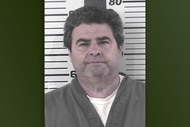Was It a Tragic Accident, Murder, Or ... an Owl? Revisiting Theories in the Michael Peterson Case
Kathleen Peterson was found at the bottom of the staircase in her lavish North Carolina home in 2001, but the mystery around her death continues to endure.

It’s been more than two decades since Kathleen Peterson was found crumbled at the bottom of a staircase in her North Carolina home, covered in blood.
Was it a tragic accident or something more sinister? That mystery has continued to endure for decades, permanently dividing a once close-knit family, revealing dark secrets, and leading to a lengthy — and dramatic — legal battle with unexpected twists and turns that left those close to the case reeling.
At the center of the drama is Kathleen’s best-selling author husband Michael Peterson, who has continued to maintain, since the early morning hours of Dec. 9, 2001, when Kathleen’s body was discovered, that he never harmed his wife.
“The obsession of what happened on that back staircase has been the subject of a Netflix documentary, an HBO dramatic series, and any number of books and podcasts, all asking the same question, did he do it?” Dennis Murphy said in Dateline: Unforgettable. “I think the story resonates with me and so many others because we just don’t know.”
Michael and Kathleen Peterson's Marriage
From the outside, Kathleen and Michael appeared to have an ideal marriage. While Michael, a former Marine, stayed home working on his latest novels, Kathleen was a successful business executive at a telecommunications company.
Their blended home was full of life and laughter as they raised Michael’s four children and Kathleen’s daughter, Caitlin, together in a sprawling Durham home.
When the children headed to college, Michael and Kathleen kept busy hosting lively dinner parties, attending charity events, and enjoying domestic life together.
“Not only did she raise these children and have quite an accomplished corporate career, oh, dinner for 50? She’d do it,” her sister Candace Zamperini recalled.
What Happened to Kathleen Peterson?
On the night of Dec 8, 2001, Michael would later say that Kathleen made them dinner, they watched a movie, and then had a glass of wine out by the pool. Sometime around 11 p.m. or midnight, Kathleen headed in to get some sleep before an early morning conference call the next day. Michael said he stayed outside for a few hours, coming back inside the home around 2 a.m. That’s when he said he discovered his wife bleeding at the bottom of a back staircase.
“My wife had an accident. She’s still breathing,” he frantically told a 911 operator. “She fell down the stairs.”
Emergency responders arrived to find Michael, sobbing and cradling his wife.
“That was the worst,” the Vietnam veteran would later say. “ I mean that was worse than anything in war.”
Kathleen died from her injuries, launching a two-decade long mystery into her death. Michael insisted his wife must have fallen down the stairs and hit her head. The medical examiner at the scene also believed that could be a realistic possibility after examining the body and finding gashes in the back of her head.
But authorities were also struck by the large amount of blood at the scene.
“I’ve seen falls. I’ve had family members fall and, to me, it didn’t look anywhere like a fall,” Durham Police Detective Art Holland said. He also questioned the body’s positioning.
When Zamperini was finally allowed into the home, she was shocked by the amount of blood on the floor and walls.
RELATED: New Jersey Man Chillingly Timed How Long It Took Him to Murder Friend in Cold Blood
“My sister’s blood is washed in pools up against the wall,” she said. “I mean her blood was everywhere.”
Zamperini wanted to believe her sister’s death was an accident and initially stood behind her brother-in-law.
“I thought they were happily married. She was very much in love with him,” she said.
Investigation into Michael Peterson
When investigators began to look into the marriage, however, they discovered some cracks in the union. The couple was under significant financial stress and carrying large amounts of credit card debt.
RELATED: What Really Happened During the Infamous Murder of Italian Fashion Icon Maurizio Gucci
“They were living above their means,” Holland said.
The couple also found themselves under public scrutiny during Michael’s unsuccessful run for mayor. Although he claimed to have won a Purple Heart in battle, it came out during the campaign that he never had received the honor and was injured in a car accident in Japan, not in battle in Vietnam like he claimed.
They also learned that Michael had been arranging to meet up with a male escort shortly before Kathleen’s death.
But it was the autopsy results, released by the coroner several months later, that would permanently divide the family. The coroner discovered seven long, severe lacerations on her head, suggesting to investigators that she may have been beaten to death.
To Kathleen’s daughter Caitlin — who had initially supported her stepdad — the report suggested her mother had been killed. She reached out to Michael’s daughter Margaret to discuss the report.
“I said, ‘You need to read this, you need to understand that Mom, she did not die from falling down the stairs. She was beaten to death,’” Caitlin recalled.
But Margaret and her sister Martha remained staunchly in their father’s corner, severing the once tight-knight family for good.
Investigators also uncovered another eerie death in Michael’s past. Years earlier, while he and his first wife were living in Germany their close friend Elizabeth Ratliff was found dead at the bottom of her stairs on Nov. 25, 1985.
RELATED: Minnesota Teen Mysteriously Disappears after Partying with Friends — What Happened to Her?
Michael had been the last one to see the widowed mom of two. He told authorities he’d given her a ride home the previous night after Ratliff dined at their home. After dropping her off, he said he returned home. The medical examiner determined Ratliff died of an intracranial hemorrhage and no criminal investigation was ever launched.
Her body was returned to the United States and she was buried in Texas. Her two young daughters, Margaret and Martha, were adopted by Michael.
The unnerving similarities between the two deaths, however, had investigators concerned. With the approval of Margaret and Martha, they exhumed Ratliff’s body and performed a new autopsy.
The medical examiner discovered that like Kathleen, Ratliff had seven deep lacerations in her scalp.
“The lacerations were very similar to the ones that had been perpetrated on Kathleen Peterson and in her findings, she made a decision that Ms. Ratliff had been murdered,” former district attorney Freda Black told Dateline: Unforgettable.
Armed with what they felt was a mountain of evidence, Michael was arrested for Kathleen’s murder and went on trial in 2003.
RELATED: Was a College Student’s Brutal Murder an Occult Sacrifice or a Cold-Blooded Betrayal?
Prosecutors laid out the evidence including compelling testimony from blood spatter expert Duane Deaver, who testified that the blood left behind suggested Kathleen had been beaten to death by her husband.
The defense called their own blood pattern expert and forensic scientist Dr. Henry Lee to refute Deaver’s claims and pointed to the couple’s happy marriage.
“No one thought Michael could have ever harmed Kathleen, and indeed there was never a shred of evidence that they had ever had so much as a loud argument,” defense attorney David Rudolf told Murphy.
They also disputed the prosecution’s claim that Kathleen had been beaten to death, noting she had suffered no skull or bone fractures or injury to the brain.
“That’s just almost an impossibility if what you’re doing is beating somebody with a metal object,” Rudolf said.
They contended Kathleen had tragically fallen on the dark, narrow stairs after taking Valium for an injury and drinking alcohol that night.
Although Michael never took the stand, he admitted to Dateline that he had extra-marital sexual relations during the relationship with other men, describing himself as bisexual.
“For me, it was strictly sex. Had nothing to do with love or a relationship,” he said.
RELATED: Who Killed a Successful Businessman on the Streets of Puerto Rico?
A jury wouldn’t believe that Kathleen’s death had simply been an accident and convicted Michael of first-degree murder. He was sentenced to life behind bars.
Owl Theory, Explained
As his attorneys fruitlessly tried appeal after appeal, another compelling theory surrounding Kathleen’s death emerged known as the “owl theory.”
The theory, first posed by the Peterson’s neighbor, was that Kathleen may have gone outside in the front of their home to check on some holiday decorations she had put up earlier that day. While under a tree in the front yard, the neighbor suggested that Kathleen may have been attacked by an owl, explaining the large gashes to her head.
The theory would also explain the blood drops found on the front walkway and a blood smear on the front door. Gravely injured, the neighbor believed that Kathleen may have ran back into the house, then passed out near the stairs, regained consciousness and flailed around trying to get help, before passing out one final time.
A similar attack had been caught on video at a business around 20 miles away and the neighbor — who was also an attorney himself — found mention of a feather in the case file notes.
Armed with this information, the neighbor enlisted the help of Tim Thompson, the owner of Associated Microscope, to examine a slide of the feather. Thompson found a second bird feather mixed in Kathleen’s hair along with a small sliver of wood that matched the kind of tree in the front yard.
Using the new information, Michael’s legal team tried to get a new trial but were turned down.
It seemed the author would be destined to spend the rest of his life in prison until an investigation into the prosecution’s blood spatter expert proved he had lied on the stand about his experience and may have manipulated experiments to try to get the results he needed.
Michael was granted a new trial in 2011 and was released on a $300,000 bond. Prosecutors were set to retry the case when Michael decided to enter an Alford plea to voluntary manslaughter as part of a plea deal. In exchange, he was sentenced to time served.
An Alford plea doesn’t require an admission of guilt but acknowledges that prosecutors have enough evidence that a jury could convict him.
Now a free man, Michael continues to maintain his innocence and said he only decided to take the plea so that he didn’t have to lose any more time with his family.
“It was the most difficult decision I ever made in my life,” he said.
For Kathleen’s family, the plea was “not perfect justice but justice,” yet exactly what happened that December night in 2001 remains a mystery.




























